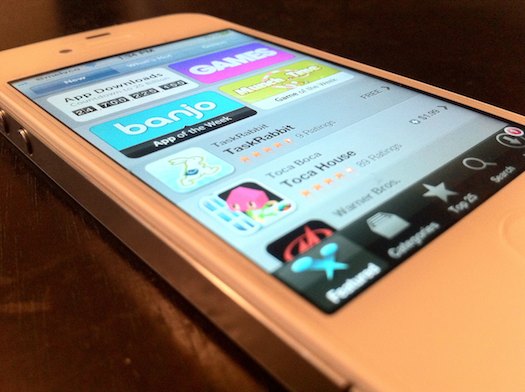With 750,000+ apps in the App Store and iTunes approaching half a billion accounts with credit cards enabled for one-click shopping, little wonder iOS, by and large, has remained the platform of choice for mobile developers, in spite of Android’s lead in sales volume. While only a small number devs earn millions writing apps, the race to the bottom is taking its toll as most bedtime devs opt to keep their day jobs.
Appsfire, a website devoted to App Store discovery, has analyzed key app trends in 2012, creating an illustrative infographic that highlights today’s App Store app ecosystem…
2012 saw the creation of 339,164 new apps as 95,468 developers joined Apple’s platform. Among other findings, year-on-year growth of new apps published is decelerating, “likely the sign of a maturing market”.
Another notable data point clearly indicates the prevalence of either free or freemium model, where users download apps for free and later pay in-app to unlock additional features, should they need them.
Two-thirds of items found on the App Store are free apps now, or 66 percent of all apps. Contrast this to 2008 when one in each four apps was free, or 26 percent.
On app economy:
A low number of apps (a little above 1000) reached the top ranks of the App Store in the US in 2012. This stresses how difficult discovery is if you’re not part of the elite group.
We estimate that a very large number of apps (over 600,000) never got substantial traction, which is a very bad news for the app economy.
Here’s your infographic (click for larger).
If anything, a nice write-up on app economy by The New York Times painted a gloomy picture where only a select few developers earn enough money selling App Store apps to be considered successful, with most other devs lingering on the verge of profitability.
Perhaps unsurprisingly, games are still the most lucrative app category even though they represent only a fraction of the total number of apps (16 percent). Games are followed by Education (eleven percent), Entertainment (nine percent), Lifestyle (eight percent) and Books apps.
Appsfire also noted last month that Apple approved over a million apps in total in the last four years since the App Store’s inception. Over the years, some apps have been removed from the store, either due to the developer’s choice or copyright take downs or any other reason Apple has chosen to pull them.
In fact, more than 25 percent of the apps submitted and approved have been pulled out of the store.

